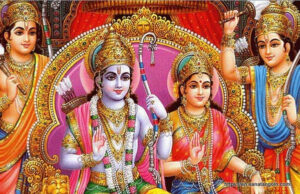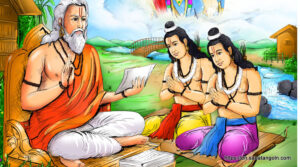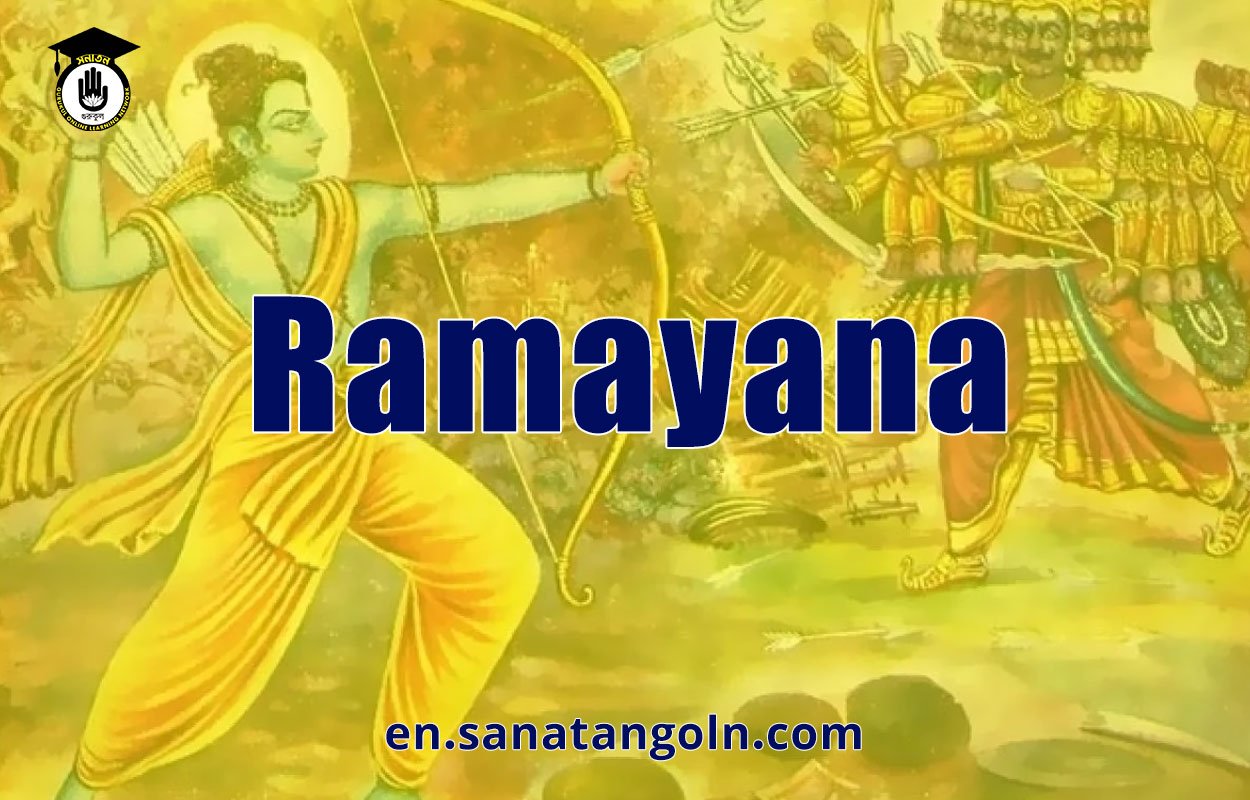The origins of the Ramayana are shrouded in myth and legend, and it is not clear when or how the story was first composed. According to some accounts, the epic was written by the sage Valmiki, who is considered one of the greatest poets of ancient India. Other versions of the story suggest that the Ramayana was composed over a period of centuries, with different authors adding to the original tale.

The Ramayana is divided into seven books, or kandas, each of which tells a different part of the story. The first book, the Balakanda, describes the birth and childhood of Rama, as well as his marriage to Sita. The second book, the Ayodhyakanda, describes the events leading up to Rama’s exile from Ayodhya, including the scheming of his stepmother Kaikeyi. The third book, the Aranyakanda, describes Rama’s wanderings in the forest, where he encounters many different creatures and battles various demons.
The fourth book, the Kishkindhakanda, describes Rama’s alliance with the monkey king Hanuman, who helps him to rescue Sita from Ravana’s clutches. The fifth book, the Sundarakanda, describes the efforts of Hanuman to find Sita, and his eventual meeting with her. The sixth book, the Yuddhakanda, describes the epic battle between Rama and Ravana, in which Rama emerges victorious. Finally, the seventh book, the Uttarakanda, describes Rama’s return to Ayodhya and his coronation as king.

The Ramayana is more than just a story of heroism and adventure; it is also a deeply philosophical work that explores the nature of dharma (righteousness), karma (action), and moksha (liberation). At its heart, the Ramayana is a story of the triumph of good over evil, of the power of love and devotion to overcome even the most daunting obstacles.
One of the most fascinating aspects of the Ramayana is its portrayal of the different characters and their motivations. Rama is depicted as the perfect prince, a paragon of virtue and righteousness. His wife Sita is the epitome of feminine beauty and grace, and her love and devotion to Rama are unwavering. The demon king Ravana is a complex and multi-dimensional character, portrayed not simply as an evil monster but as a powerful and intelligent ruler with his own motivations and desires.

The Ramayana has had a profound influence on Indian culture and society, shaping the way that people think about love, honor, and duty. The story has been retold countless times in various forms, from television shows and movies to comic books and children’s stories. It has also inspired countless works of art, from paintings and sculptures to music and dance.
Important Characters of Ramayana:
Here are some of the most well-known and important characters in the Ramayana:
- Rama: The protagonist of the Ramayana, Rama is a prince and the seventh avatar of the god Vishnu. He is known for his wisdom, courage, and devotion to dharma (righteousness).
- Sita: Rama’s wife, Sita is the epitome of purity, chastity, and devotion. She is kidnapped by the demon king Ravana, which sets the events of the Ramayana in motion.
- Lakshmana: Rama’s younger brother, Lakshmana accompanies Rama and Sita into exile and plays a crucial role in helping Rama defeat Ravana.
- Ravana: The main antagonist of the Ramayana, Ravana is a ten-headed demon king who kidnaps Sita and attempts to seduce her.
- Hanuman: A monkey god, Hanuman is Rama’s loyal friend and ally. He helps Rama and Lakshmana locate Sita and plays a key role in the battle against Ravana.
- Bharata: Rama’s half-brother, Bharata is known for his devotion to Rama. He takes on the role of king in Rama’s absence during his exile.
- Shatrughna: Another of Rama’s half-brothers, Shatrughna plays a minor role in the Ramayana but is known for his bravery in battle.
- Dasharatha: Rama’s father and the king of Ayodhya, Dasharatha’s decision to exile Rama sets the events of the Ramayana in motion.
- Kaikeyi: One of Dasharatha’s wives and Rama’s stepmother, Kaikeyi convinces Dasharatha to exile Rama and make her own son Bharata the king.
- Sage Valmiki: The author of the Ramayana, Sage Valmiki is revered as a great poet and spiritual teacher in Indian culture.

Impact on Society:
The Ramayana is one of the most influential and revered epics in Hinduism and Indian culture. Its impact on society is vast and varied, with the epic shaping many aspects of Indian society, including religion, culture, art, and politics.
Religious Impact:
The Ramayana is considered a sacred text in Hinduism, and its influence on religious beliefs and practices is significant. The epic provides a model for the ideal life, with Lord Rama serving as a role model for Hindus worldwide. The Ramayana’s teachings have influenced the development of Hindu philosophy, including ideas such as dharma (righteousness), karma (action), and moksha (liberation). Many Hindu festivals, such as Diwali, are based on the events described in the Ramayana.
Cultural Impact:
The Ramayana has had a profound impact on Indian culture, shaping art, literature, and entertainment. It has inspired countless plays, films, and television shows, both in India and around the world. The epic has also influenced classical Indian dance, music, and sculpture, with many artists drawing inspiration from its stories and characters.
See more:
